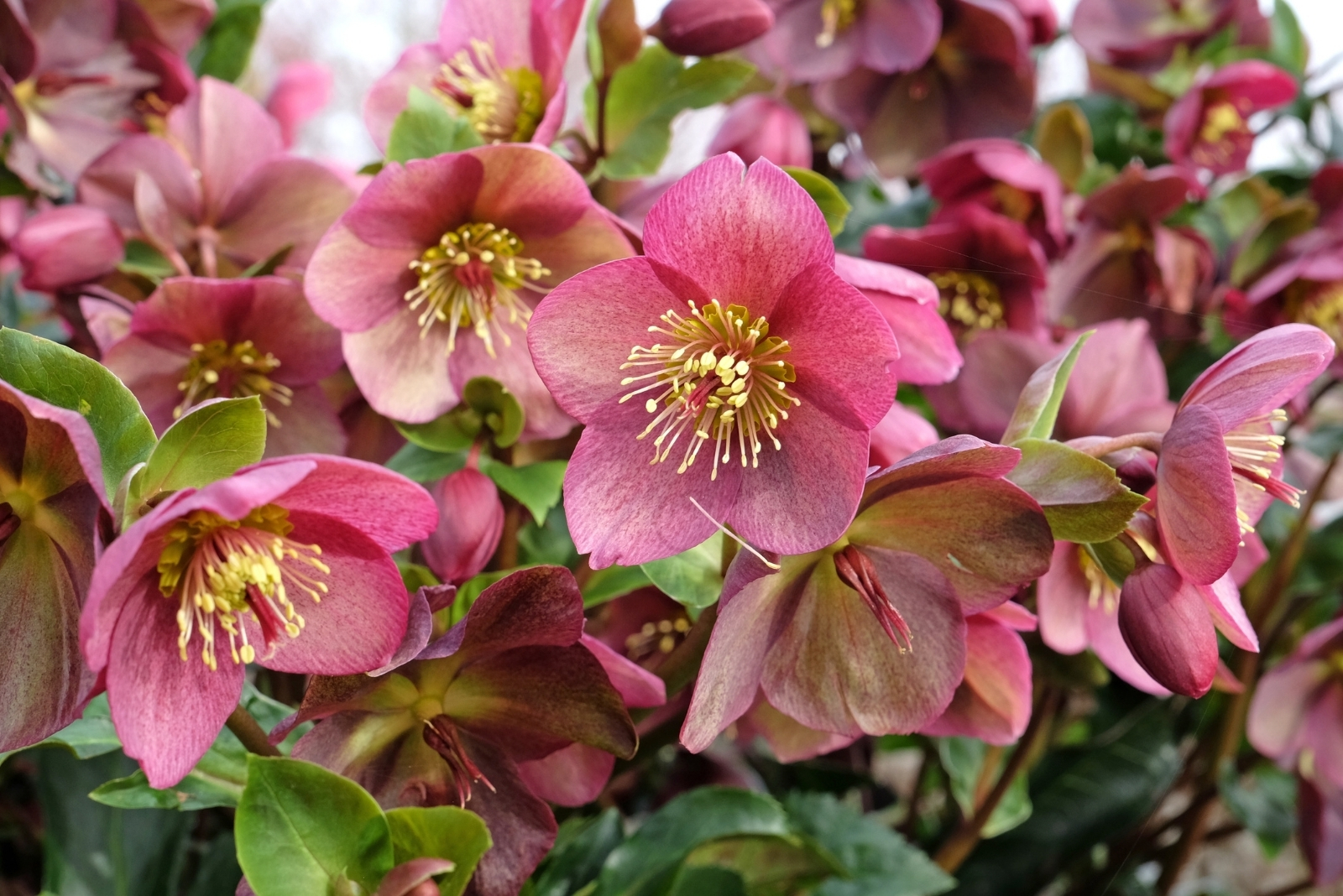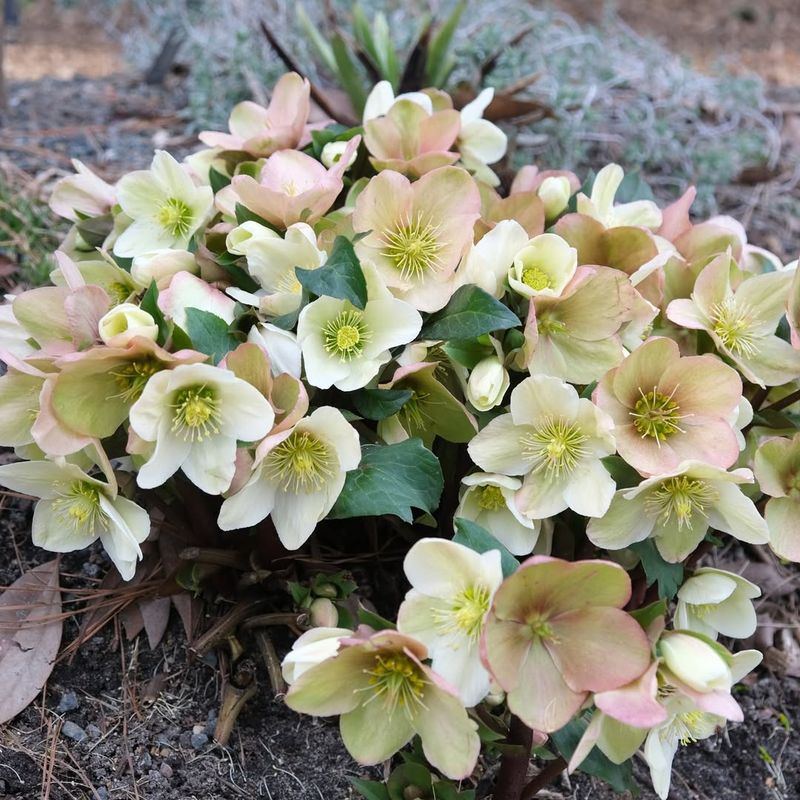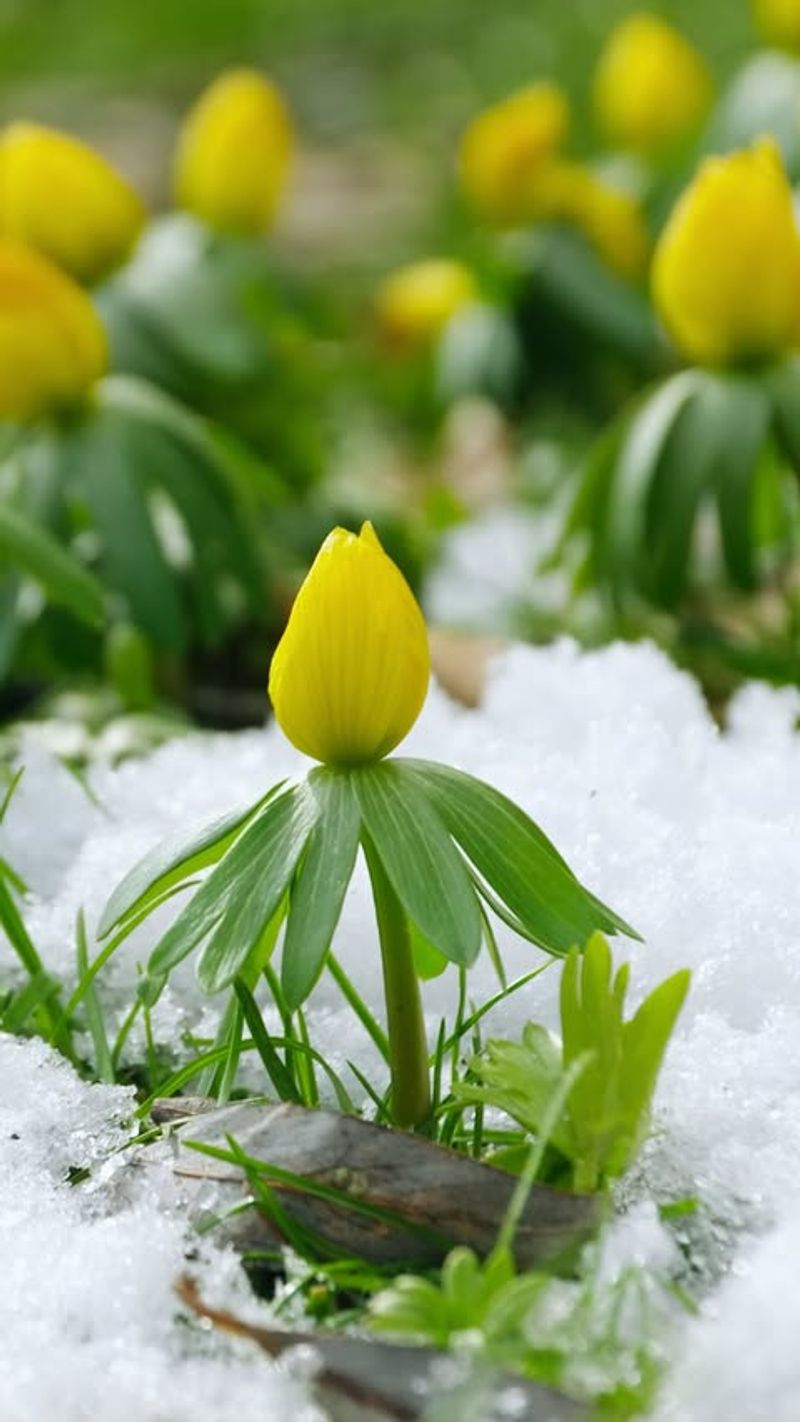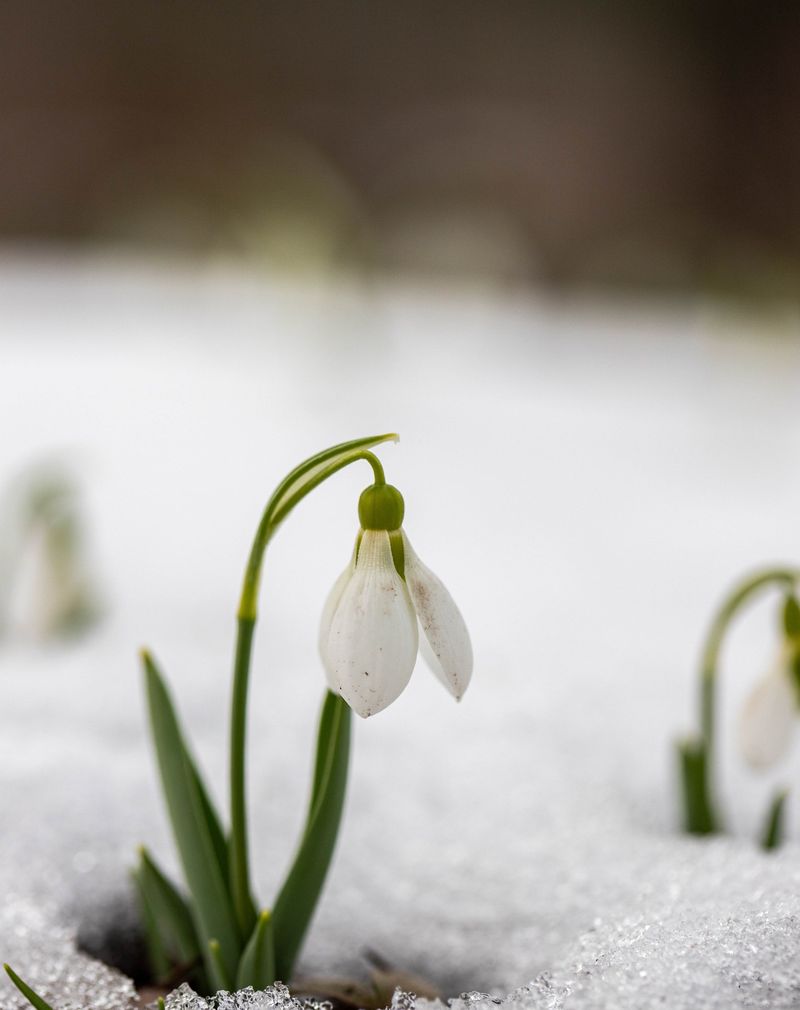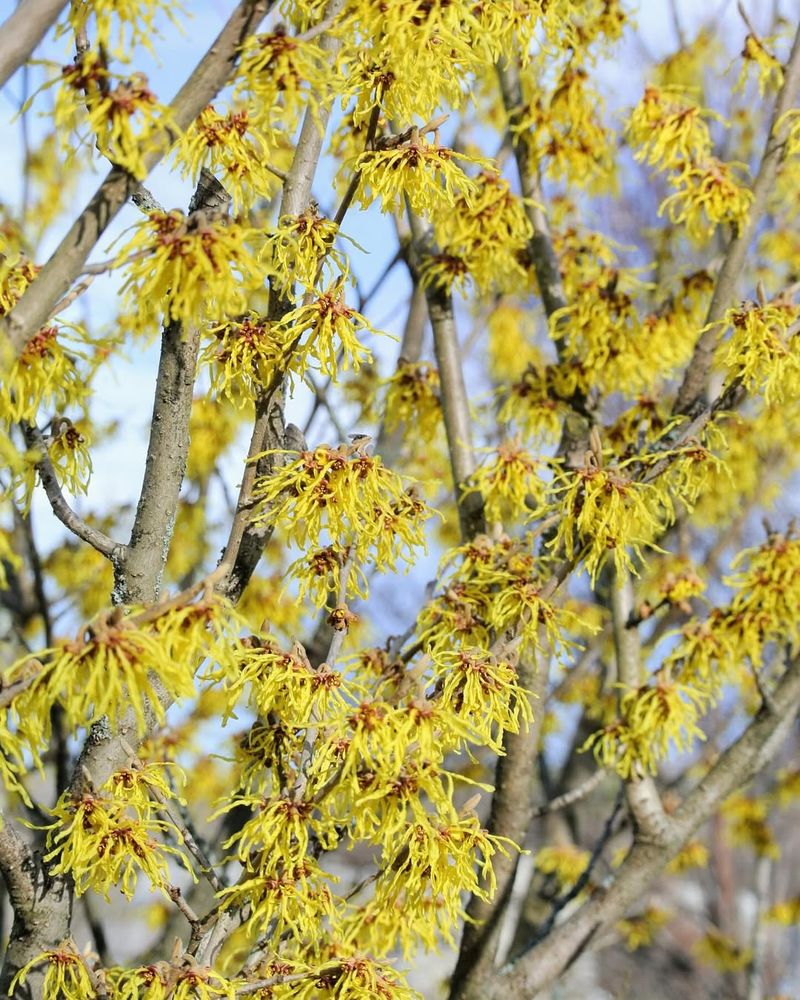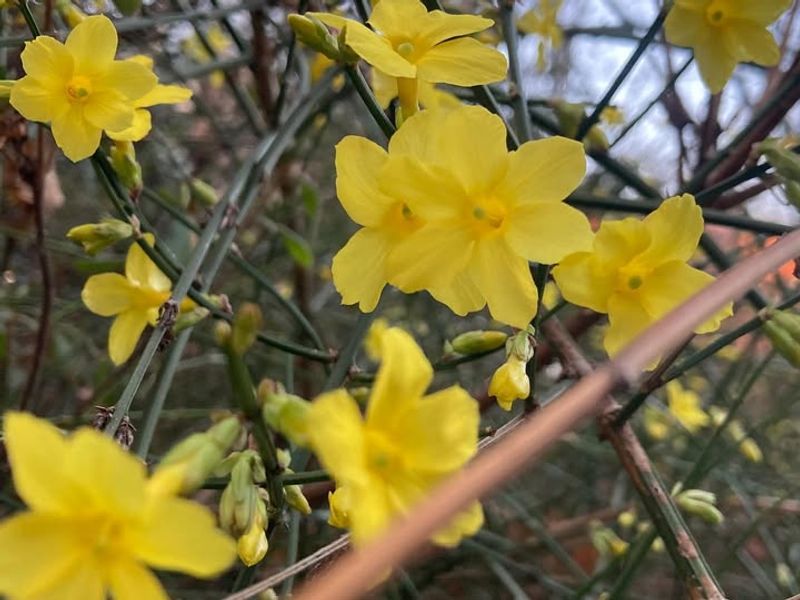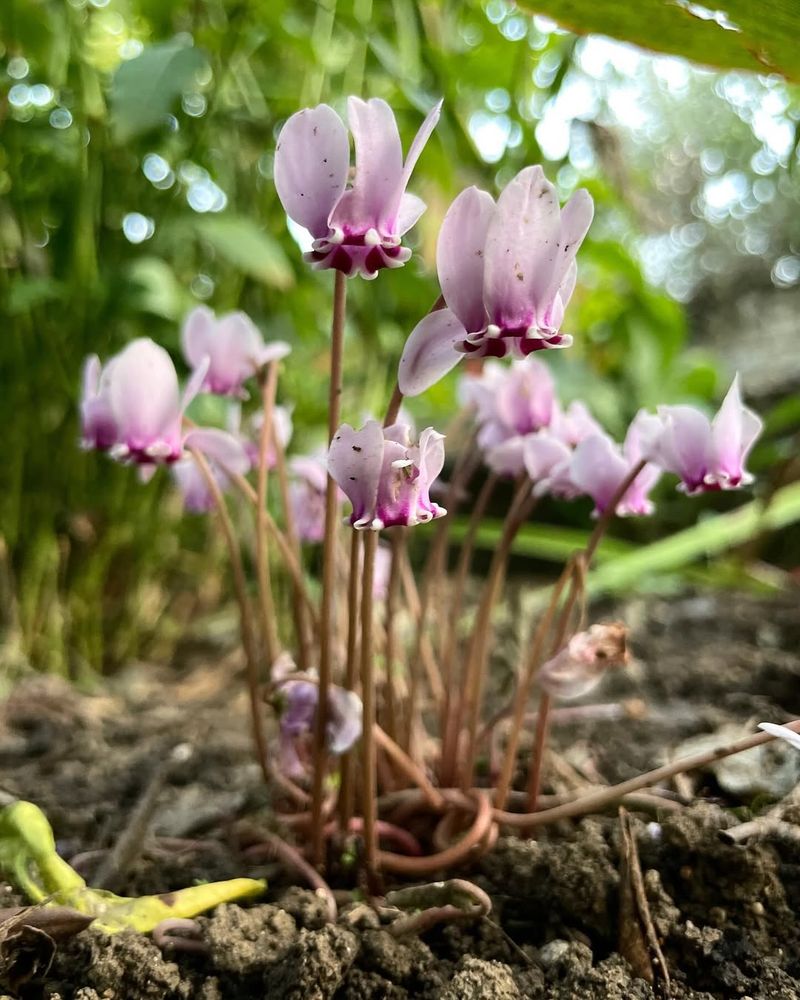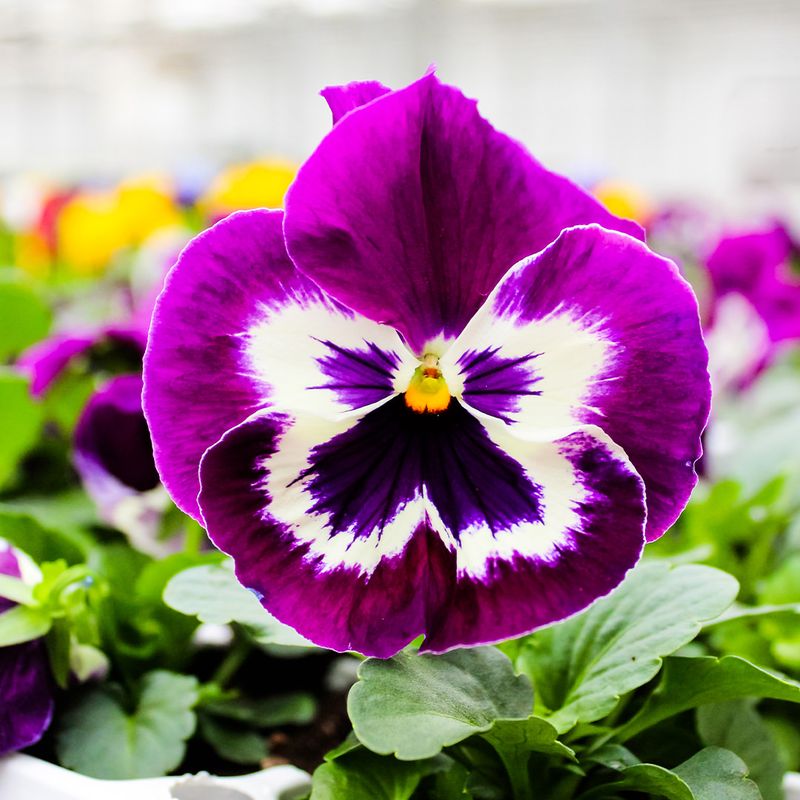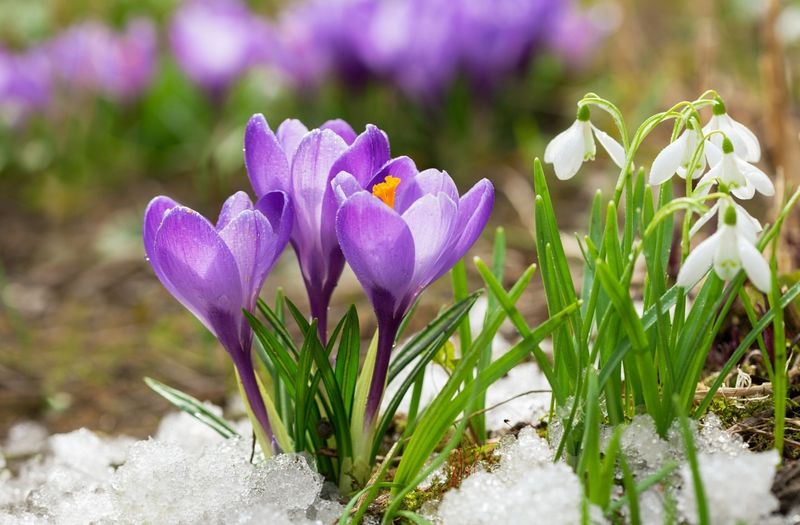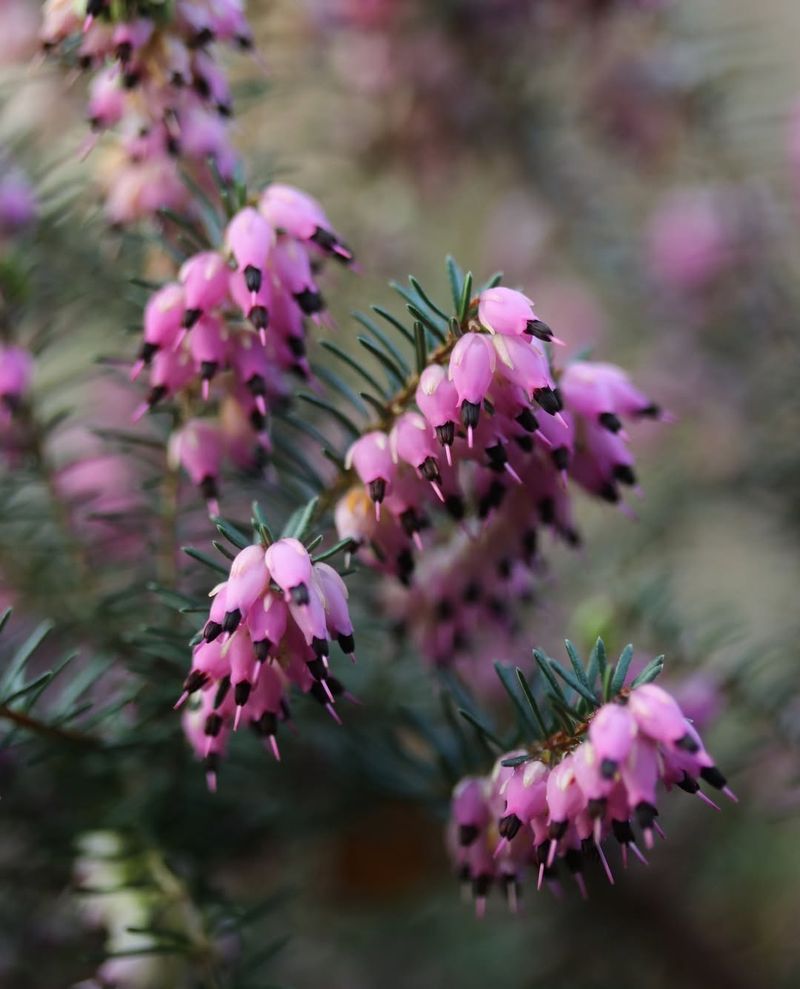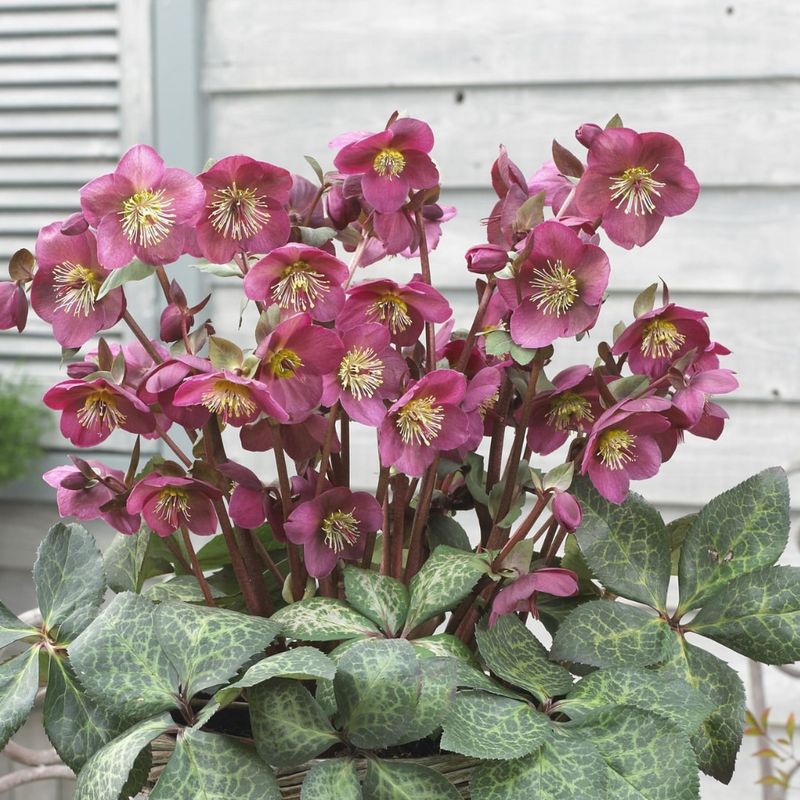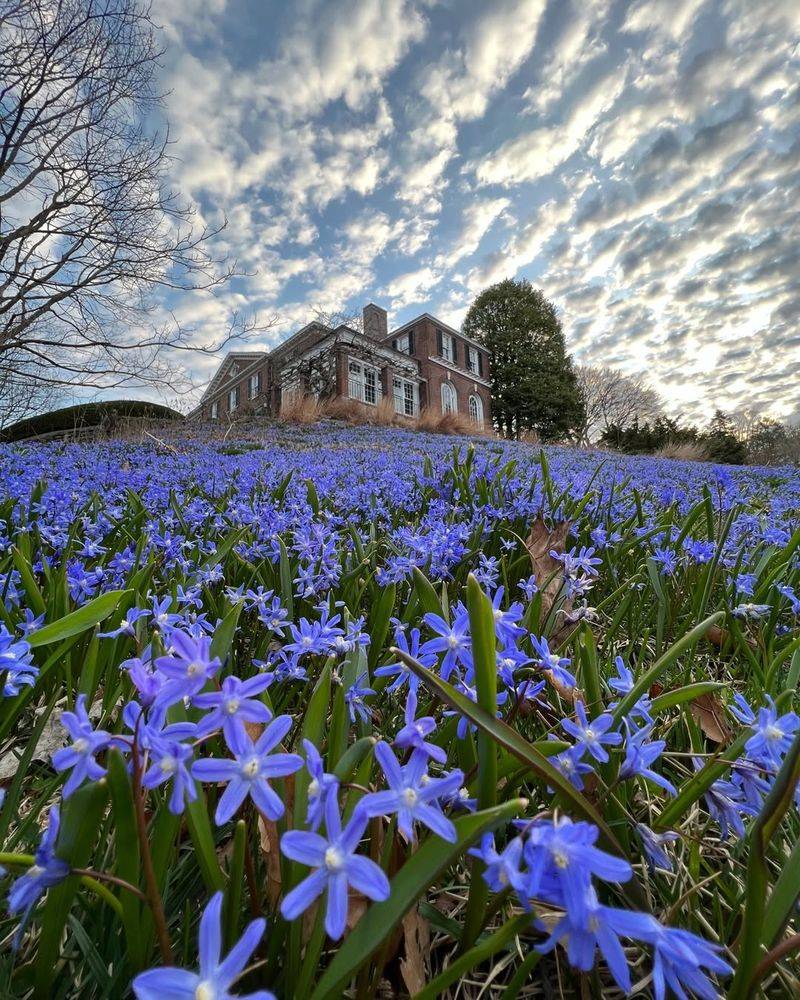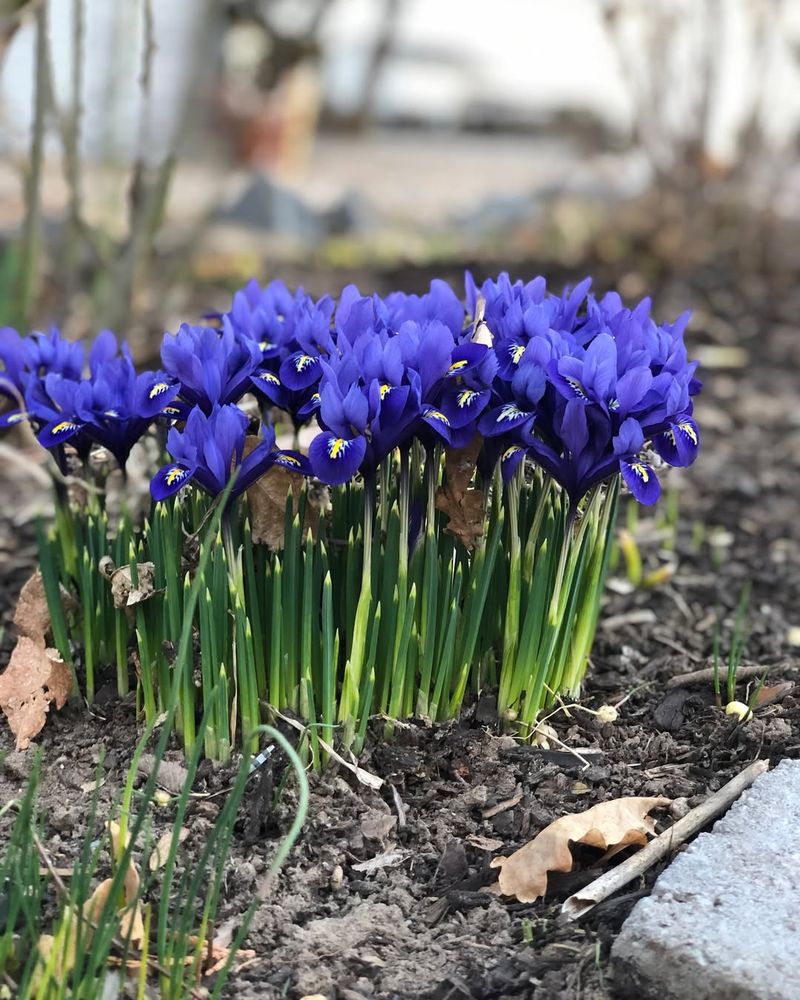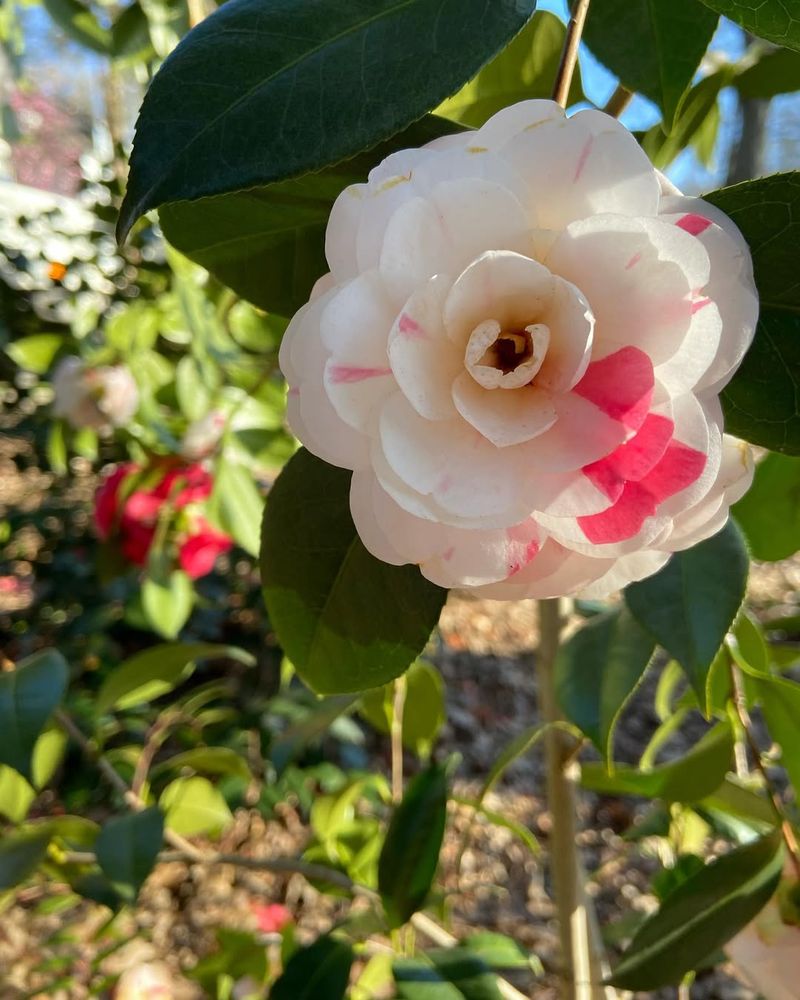Pennsylvania winters can be harsh, but some flowers don’t mind the chill. These cold-hardy varieties add unexpected color and cheer to frosty gardens.
They make even the bleakest months feel alive and inviting. With the right choices, your winter garden can be as captivating as spring.
1. Hellebore (Christmas Rose)
Often called the Christmas Rose, hellebores start showing their gorgeous blooms right when most plants are sleeping through winter. Pennsylvania gardeners love how these flowers push through frozen ground, sometimes even poking through snow.
Their waxy petals come in shades of white, pink, purple, and even green, lasting for weeks without wilting. Plant them in partly shaded spots where they’ll get protection from harsh winds but still receive some winter sun for best results.
2. Winter Aconite
Cheerful yellow blooms appear surprisingly early, sometimes in late January across Pennsylvania yards. Winter aconite creates carpets of sunshine-colored flowers that make you smile even on the grayest days.
These small but mighty plants naturalize easily, meaning they’ll spread and come back year after year without much fuss. They prefer spots with good drainage and will reward you with their bright faces when everything else looks dreary and brown outside your window.
3. Snowdrop
Nothing signals hope quite like spotting snowdrops pushing through icy Pennsylvania soil. Their delicate white bells dangle gracefully, nodding in cold breezes as if greeting the coming spring.
Despite looking fragile, snowdrops are surprisingly tough and can survive temperatures well below freezing without damage. Plant bulbs in fall under deciduous trees where they’ll get winter sun but summer shade, and watch them multiply into larger clumps each year naturally.
4. Witch Hazel
With spidery ribbons of yellow, orange, or red, witch hazel blooms look almost magical against bare winter branches. Many Pennsylvania gardeners choose this shrub specifically because it flowers when absolutely nothing else does.
The blooms release a sweet fragrance that carries on cold air, attracting any brave pollinators out on warmer winter days. Witch hazel tolerates various soil types and can handle both sun and partial shade, making it adaptable for different garden spots around your property.
5. Winter Jasmine
Arching stems covered in cheerful yellow flowers make winter jasmine a standout in cold Pennsylvania landscapes. Unlike its fragrant cousins, this variety focuses its energy on producing loads of bright blooms instead of scent.
The green stems stay colorful even when flowers aren’t present, providing year-round interest in your garden beds or along fences. It’s incredibly forgiving and will bounce back even after harsh freezes, making it perfect for beginner gardeners trying winter blooms.
6. Cyclamen
Swept-back petals in shades of pink, red, or white flutter above beautifully marbled leaves throughout Pennsylvania winters. Hardy cyclamen varieties differ from houseplant types and can actually survive outdoors in freezing conditions.
Their unique butterfly-like flowers appear from fall through early spring, providing months of color when most gardens look dull. Plant them near walkways or patios where you’ll see them often, and they’ll self-seed to create natural-looking drifts over time.
7. Pansy
Those cheerful faces keep blooming even when frost covers Pennsylvania gardens each morning. Modern pansy varieties are bred specifically to tolerate cold, with some types flowering continuously through mild winter stretches.
Their vibrant colors—from deep purples to sunny yellows—brighten up containers, borders, and window boxes when everything else has faded away. Deadhead spent blooms regularly to encourage more flowers, and they’ll keep performing until spring bulbs take over the show in your yard.
8. Crocus
Among the earliest risers, crocuses often bloom in late winter across Pennsylvania lawns and gardens. Their cup-shaped flowers in purple, yellow, white, and striped varieties signal that warmer days are finally approaching.
Squirrels sometimes dig up the corms, so many gardeners plant extra or cover beds with chicken wire until shoots emerge. These little beauties naturalize wonderfully in grass, creating waves of color that appear before you even need to mow your lawn for the season.
9. Winter Heath
Tiny bell-shaped flowers cover these low evergreen shrubs from late fall through early spring in Pennsylvania. Winter heath (Erica carnea) creates colorful groundcover that stays attractive even when temperatures plummet below freezing.
The needle-like foliage provides year-round structure, while pink, white, or red blooms add unexpected pops of color during dreary months. They prefer acidic soil and good drainage, so amend your beds with peat or compost if your Pennsylvania soil leans alkaline for healthier plants.
10. Lenten Rose
A close relative of Christmas rose, Lenten rose (Helleborus orientalis) blooms slightly later, around the Christian Lenten season in Pennsylvania. Their downward-facing flowers come in stunning color combinations including burgundy, cream, pink, and speckled patterns.
Once established, these plants are practically indestructible and will thrive for decades in shaded areas under trees or along north-facing walls. Deer typically avoid them, making Lenten roses perfect for Pennsylvania properties where wildlife browsing causes constant gardening frustration and disappointment.
11. Glory-of-the-Snow
Star-shaped blue flowers with white centers carpet the ground in late winter throughout Pennsylvania gardens. Glory-of-the-snow (Chionodoxa) earns its name by blooming while snow still lingers in shaded spots around your property.
These carefree bulbs multiply quickly and require almost no maintenance once planted in well-drained soil with adequate sunlight. They look spectacular planted in drifts under deciduous trees or mixed with other early bloomers like snowdrops for extended color throughout the transition season.
12. Iris Reticulata
These miniature irises pack serious color impact despite their small size in Pennsylvania late-winter gardens. Deep purple, blue, or yellow flowers appear on short stems, often blooming while patches of snow still remain in protected areas.
Iris reticulata thrives in rock gardens, containers, or at the front of borders where their intricate blooms can be appreciated up close. Plant the small bulbs in fall, and they’ll reward you with fragrant flowers that smell faintly of violets each February or March.
13. Camellia
Cold-hardy camellia varieties bring elegant rose-like blooms to sheltered Pennsylvania gardens during winter months. While not all camellias tolerate northern cold, specific cultivars like ‘Winter’s Snowman’ and ‘April Dawn’ can survive with proper placement.
Their glossy evergreen leaves look attractive year-round, and flowers range from white to pink to deep red depending on variety. Plant them in protected spots away from harsh winds, and mulch heavily around roots to help these beauties survive Pennsylvania’s coldest nights successfully.

